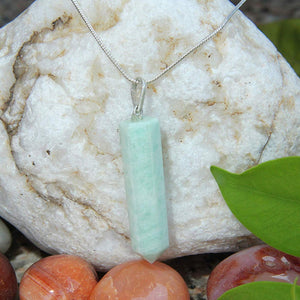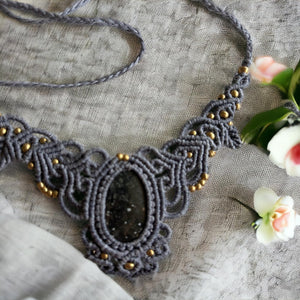Crystals That Can’t Go in Water: Ultimate Guide to Protect Your Stones
Let me set the scene: I stood, helplessly, watching as my friend rinsed her brand-new $200 selenite tower under the tap. Within seconds, faster than you can say, "Wait, don't!" That glorious, gleaming crystal began to melt away, dissolving into nothing more than an expensive puddle. It was like watching ice cream vanish on a hot summer day, only much, much sadder (and significantly more expensive).
Now, let’s pause for a moment. Reality check time: You've probably spent hours carefully choosing your crystals, lovingly arranging them on your shelf or altar, and proudly showing them off to anyone who’ll listen (or pretend to). But here's the cold, damp truth: half of those precious crystals could meet a tragic end if introduced to water. That serene crystal garden you've cultivated? One misguided cleansing could turn it into a graveyard of cloudy, cracked, or crumbly stones.
But don't panic, I wouldn't lead you into such a terrifying crystal crisis without a lifeline. Here's my promise: today, you'll learn exactly which crystals you absolutely must keep away from water, why water acts like kryptonite to certain stones, and how you can safely cleanse them without risking permanent heartbreak.
Series Recap
If you're just joining this crystal-cleaning party (welcome!), let’s quickly get you caught up. We kicked off this "Crystal Cleansing 101" series with a deep dive into 5 Beginner-Friendly Crystal Cleansing Methods, followed by exploring how frequently you should cleanse your crystals (hint: more often than you clean your windows, less often than you check Instagram). Last week, we timed it perfectly with Celestial Cleansing and Lunar Phases because aligning your crystals with moon cycles is peak crystal-lover energy.
Now, you've mastered the art of cleansing but what's the point of all that meticulous care if your precious crystals could dissolve into oblivion at the first touch of water? That brings us to today: keeping your beloved crystals safe and happy while cleansing them.
Let’s dive in (figuratively speaking only—remember, water is off-limits!).
The Hidden Dangers: Why Some Crystals Fear Water
The Science Behind Water Damage

You might be wondering, "Water seems gentle, pure, natural—why would it harm my sturdy-looking crystal?" Well, crystals, like cats, have strong opinions about water. Some simply cannot stand it.
Here's the quick science breakdown (no white lab coats required):
-
Dissolution: Some crystals literally melt faster than your motivation after the New Year (selenite, we're looking at you). Just as sugar dissolves in tea, certain crystals dissolve tragically when wet.
-
Structural Damage: Water sneaks into tiny fractures, causing internal cracking. Imagine microscopic ninja warriors infiltrating your crystal's fortress—it’s not pretty.
-
Chemical Reactions: Some crystals contain metals that rust or oxidize upon contact with water. Like leaving your favorite silver jewelry out in the rain, one word: heartbreak.
-
Porosity Problems: Softer crystals absorb water and become brittle, crumbly, or moldy. It's essentially the crystal equivalent of your favorite wool sweater shrunk in the wash. Tragic, irreversible, and sadly avoidable.
The Mohs Scale: Your Crystal’s First Line of Defense

Luckily, crystal enthusiasts have a tool sharper than quartz itself: the Mohs Scale. This handy scale measures mineral hardness from 1 (softer than a marshmallow) to 10 (diamond-level tough). As a basic rule of thumb: if your crystal ranks below a 6, water is its enemy.
But—and it’s a big one—hardness isn’t everything. Some crystals with higher hardness ratings can still react chemically or structurally to water. Think of the Mohs scale as a first line of defense, but not an all-encompassing shield. Chemistry matters too.
Emergency Crystal First Aid: A Quick Story

Before we dive deeper, let's talk emergencies. Remember the selenite incident from the beginning? Sadly, that wasn’t fiction—it really happened, and my friend still mourns that dissolved tower.
If your selenite or other delicate crystal accidentally encounters water, here's what you do:
-
Immediate Rescue: Remove the crystal from water instantly—pretend you're saving a kitten from a puddle.
-
Gently Dry: Pat softly with a cloth, never rubbing harshly. This is a crystal, not your muddy dog.
-
Assess Damage: Look carefully. Any immediate pits or cloudiness? Unfortunately, those are permanent marks of crystal trauma.
-
Salvage Strategy: If only slightly damp, set aside gently in a dry, ventilated place and hope for minimal damage. But truthfully? Prevention beats cure every time.
The Complete Water-Danger List
Now that you're crystal-clear on why water and certain stones are sworn enemies, let's dive deeper into each water-sensitive crystal category. Consider this your definitive guide with practical lessons to keep your crystals (and wallet) safe.
The Complete Water-Danger List (in Vivid Crystal Clarity)
Category 1: Dissolvable Crystals

At the top of our watery danger list, we find the notoriously delicate Selenite and Gypsum family (Mohs hardness 2). These elegant white towers, shimmering satin spar rods, and intricate desert roses can dissolve faster than your New Year's resolutions on January 2nd. I'll never forget witnessing a friend's cherished $200 selenite tower reduced to mush within seconds under running water—a harsh reminder that not all crystal baths are relaxing or rejuvenating.
Then there's Halite, or salt crystal (Mohs 2.5), whose delicate cubic shapes look deceptively sturdy. Sadly, this crystal completely dissolves with alarming ease—even exposure to humid air alone can be catastrophic, leaving behind nothing more than a disappointing salty puddle.
Next up is Celestite (Mohs 3-3.5), a crystal known for its angelic blue clusters and tranquil appearance. Unfortunately, it quickly clouds and permanently loses its divine sparkle upon contact with water, transforming from ethereal beauty to dreary gloom faster than you can utter "celestial disaster."
Category 2: Rust & Oxidation Risks

Enter the chemical drama queens, starting with Pyrite, affectionately known as Fool's Gold (Mohs 6-6.5). These glamorous metallic cubes oxidize rapidly when wet, causing unsightly rust and producing hazardous sulfuric acid—definitely more villainous than valuable in water.
Similarly temperamental is Hematite (Mohs 5-6), a glossy, metallic stone beloved for its polished shine. Tragically, hematite can rust dramatically, staining water and surroundings an alarming blood-red color. Your sophisticated stone can quickly deteriorate into rusty dust.
Equally problematic is Marcasite (Mohs 6-6.5), pyrite’s moody twin. This brass-colored metallic crystal rusts swiftly upon exposure to water, emitting a foul sulfur odor reminiscent of rotten eggs. Clearly, marcasite prefers staying dry and odor-free.
Category 3: Color-Changers & Fade Risks

In the beautiful-yet-dangerous category, we find vibrant Malachite (Mohs 3.5-4). Renowned for striking green bands and captivating patterns, malachite contains copper minerals that leach out in water, making it hazardous. The result: a stunning crystal that turns into a toxic nightmare if submerged.
Closely related is Azurite (Mohs 3.5-4), a deep, royal-blue crystal often found intermingled with malachite. Like its green counterpart, azurite releases copper when wet, posing significant toxicity risks and permanently damaging its majestic hue.
Then there’s the beloved Turquoise (Mohs 5-6), a classic and iconic crystal widely cherished in jewelry. Unfortunately, turquoise quickly becomes chalky and faded after water exposure, losing its vibrant color and charm forever. A once-vibrant accessory reduced to a pale shadow of its former glory.
Category 4: Soft & Fragile Stones

We move now to our delicate divas, beginning with Lepidolite (Mohs 2.5-3). With lovely lilac flakes resembling glittery confetti, lepidolite unfortunately flakes apart dramatically upon water contact, leaving behind nothing but sparkly, heartbreaking debris.
Kyanite (Mohs 4-7, depending on orientation) is another beautiful but fragile stone, known for striking blue blade-like formations. Directionally sensitive, it splits dramatically along cleavage planes when wet, easily shattering into multiple pieces—a truly heartbreaking sight.
Then there's the peaceful Angelite (Mohs 3.5), often mistaken for celestite due to its calming blue hue. Sadly, this gentle crystal turns chalky and opaque after water exposure, losing all its serene translucence and transforming into a dull, lackluster version of its former self.
Category 5: The Surprising Ones

Even some stones you'd never suspect are vulnerable. Take Amber (Mohs 2-2.5), which is actually fossilized tree resin rather than a true crystal. Prized for its warm, golden glow, amber unfortunately becomes permanently cloudy when exposed to water, losing its beautiful clarity and charm.
Similarly unexpected is Jet (Mohs 2.5-4), a chic, lightweight black fossilized wood. Despite its durable appearance, jet quickly becomes dull and matte after contact with water, forfeiting all its polished appeal and sophistication.
Finally, Fluorite (Mohs 4) is an enchanting crystal recognized for its captivating cubic shapes and stunning rainbow colors. However, fluorite can easily develop internal fractures when wet, leaving invisible damage lurking beneath its attractive facade reminding us that beauty often demands careful handling.
By recognizing these water-sensitive crystals and understanding their stories, you'll ensure your beloved stones stay radiant and intact, avoiding any heartbreaking crystal catastrophes.
The Gray Area: Crystals to Use with Caution

Some crystals aren’t outright terrified of water but they’re definitely wary. First in this cautious group is Opal, a mesmerizing stone famous for its captivating play-of-color. Despite its beauty, opal carries a moderate risk of damage due to thermal shock, which can lead to tiny, heartbreaking cracks and fissures if water temperatures fluctuate too rapidly. If you must rinse your opal, keep it quick and strictly at room temperature—though ideally, stick with moonlight cleansing, which suits opal’s delicate temperament perfectly.
Next up, the ever-enchanting Moonstone. Known for its gentle shimmer and connection to lunar energies, moonstone is susceptible to internal fractures when exposed to prolonged moisture or sudden temperature changes. Think of moonstone as the diva who prefers moonbeams to showers—short, gentle rinses are acceptable, but moonlight cleansing is obviously its soulmate (seriously, it’s right there in the name).
Finally, we have the mystical Labradorite, beloved for its vibrant flashes of blue, green, and gold. Although tougher than its fellow "maybe club" members, labradorite can occasionally develop fractures along natural cleavage lines if soaked for too long. A quick rinse usually poses no harm, but prolonged water exposure should be avoided—because nothing dims labradorite’s brilliant glow faster than unwanted cracks.
Safe Alternatives: Crystal Cleansing Without the Water Drama

You're probably asking, “But how do I keep these delicate crystals energetically clean without water?” Don’t worry—I’ve got a toolbox filled with elegant, effective, and drama-free alternatives:
-
Sound Cleansing: Singing bowls and tuning forks deliver vibration cleansing—no moisture needed.
-
Smoke Cleansing: Sage and palo santo smoke clears negativity gently. Think spa vibes, minus the water.
-
Moonlight Bath: No water required—just let them soak up lunar rays overnight. It’s the crystal equivalent of a relaxing moonlit stroll.
-
Crystal Cluster Charging: Large quartz clusters or amethyst beds cleanse safely and beautifully.
-
Visualization & Intention: Surprisingly powerful, use your mind to envision cleansing energy.
-
Rice Cleansing: Dry rice absorbs negative energy overnight. Just remember: crystal rice isn’t sushi rice!
-
Dry Salt Method: Surround (not touch) your crystal in salt overnight. Salt absorbs bad vibes like nobody’s business.
Building Your Crystal Safety Toolkit
Your crystal collection is unique, so your safety measures should be personalized too. Create your own "crystal safety checklist," detailing each crystal’s hardness, chemical composition, and best cleansing method. Trust me, it’s worth it, especially when you remember that $200 crystal puddle (sorry, friend!).
Coming Up in Post 5
Next week, we'll explore "5 Powerful Ways to Charge Your Crystals Safely" because now they're sparkling clean, let's energize them beautifully without risking a disaster.
Hint: There's a charging method that beats both sunlight and moonlight. Intrigued? Stick around!
Your Water Safety Action Plan
Ready to get started?
-
Audit: Check your crystal collection against this guide.
-
Create: Your personal crystal safety database.
-
Experiment: Try the safe alternatives above on your delicate stones.
-
Share: Tell fellow crystal lovers what you've learned and spare them the heartache!
Remember, water and some crystals mix about as well as cats and bubble baths. So stay dry, stay fabulous, and keep shining, your crystals (and your wallet) will thank you.
Want crystals that are both beautiful and easy to care for? Explore our crystal jewelry collection















